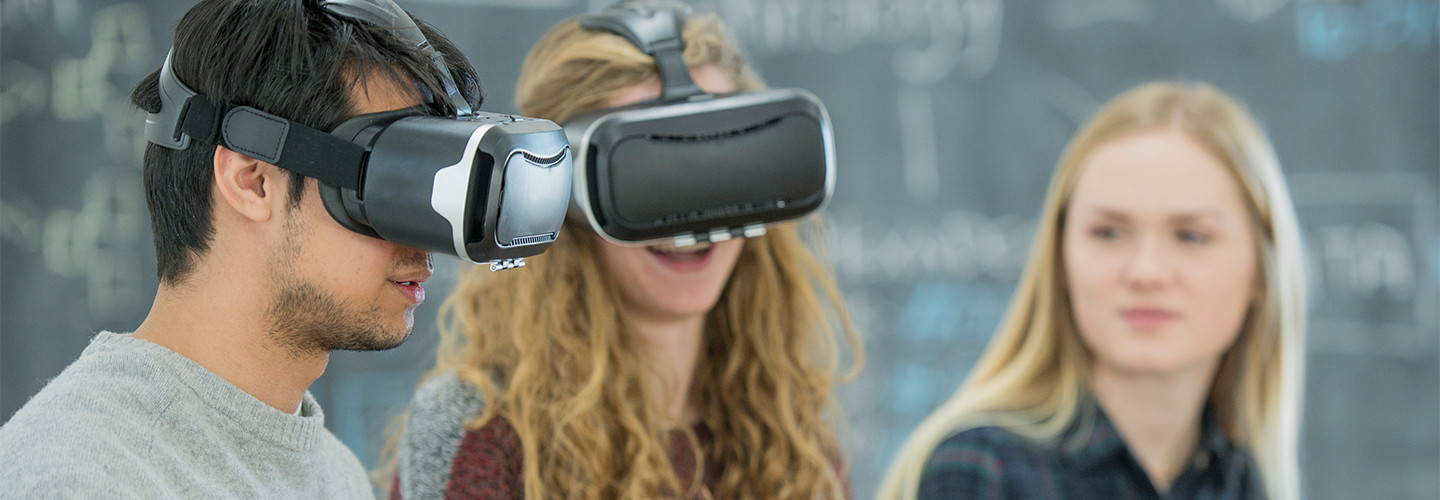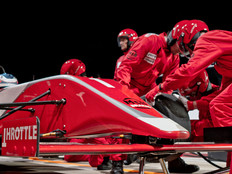UBTech 2018: Higher Ed Sees Great Potential in Virtual Reality
Virtual reality may seem like an emerging technology, but a recent Internet2 survey suggests that higher education institutions aren’t shying away from embracing a potentially transformative teaching tool.
Ben Fineman, a program manager for Internet2’s cloud collaboration services, talked about VR adoption and the components colleges will need to support it in his presentation “The Impact of Virtual Reality on Campus IT Architecture,” delivered Tuesday at the 2018 UBTech Conference in Las Vegas.
Internet2, a nonprofit consortium, provides a national academic network to about 350 university members. According to its “2018 VR/AR in Research and Education Survey,” 28 percent of higher education institutions have engaged in some level of VR deployment, 18 percent have fully deployed it and roughly half are testing VR or have not yet deployed it at all.
With the quality of VR headsets improving, options expanding and prices falling, adoption numbers are bound to swing upward, Fineman said. The newest addition to the market, standalone headsets that require neither a smartphone nor a computer, are already affordable, although the quality is still a work in progress, he said.
SIGN UP: Get more news from the EdTech newsletter in your inbox every two weeks!
Institutions Find Various Uses for VR
K–12 educators have set a quick pace for VR adoption in the classroom, Fineman noted, and it’s no longer unusual for younger students to experience virtual field trips from sources such as Google Expeditions. But immersive visits to faraway places are far from the only application that educators are taking advantage of. The Internet2 survey found that content creation, special education, training, medical education, campus recruiting, new pedagogies and collaboration also benefit from VR.
Schools of architecture, for example, have been enthusiastic early adopters, Fineman said.
At the same time, he pointed out that the most popular applications continue to mimic established methods of learning, just with an immersive component.
“We’re starting out by recreating what’s familiar to use … the classroom, with student and teacher, interacting the way they’re used to interacting,” Fineman said. But he sees in VR the potential to completely rethink how educators approach the learning process. “There’s no reason to limit ourselves to the way we’ve done things in the past.”
Survey respondents identified several benefits of incorporating VR into pedagogy, particularly the potential to help students visualize difficult concepts, increase engagement, improve learning outcomes and encourage creativity.
VR Will Place New Demands on Campus Networks
As colleges experiment with their use of VR, they also vary in the logistics of how they provide students with these experiences. The Internet2 survey shows that 55 percent of institutions have a dedicated VR space, 51 percent have a movable or ad hoc space, 38 percent let users check out VR equipment and 26 percent use a mobile cart that can move from location to location.
According to Fineman, these are the types of questions colleges will need to consider as they decide how to leverage VR on their own campuses. In the future, he said, as colleges dedicate spaces for students to explore VR, they may want to include personal lockers for students to secure their belongings since they may be vulnerable to theft while in the VR experience.
But the biggest question institutions have, Fineman said, relates to having sufficient wireless network capacity to support VR applications, PCs with enough compute power and physical spaces that are suited to the unique requirements of VR experiences.
He engaged in a quick math problem to try to convey the extent of the burden that VR may place on campus infrastructure.
“Let’s look into the future and do a little bit of a thought experiment about what our bandwidth endgame might look like,” he said.
According to Fineman’s calculations, one minute of VR content would require roughly 40 terabytes per second of bandwidth in an uncompressed state, or 500 gigabytes when compressed. That demand also affects storage, of course: roughly 300TB uncompressed or 67GB compressed for one minute of content.
“Wireless is essential,” Fineman said. “The standalone headsets are the future. The standalone headsets require wireless networking.”
That’s a big issue, he said, given that today’s campus networks are designed for limited video streaming.
“Can our wireless networks handle it when every student comes to campus with a wireless standalone headset?” he asked the audience. “It’s something to think about.”
For next year’s college freshmen, Fineman said, VR will be a normal part of the learning experience. In other words, colleges need to start thinking about their own VR adoption: what it might look like and what it might require in terms of infrastructure and support.
“We, as practitioners at universities, don’t want to be in the position of catching up to what everybody is already doing,” he said. “This is our opportunity to get ahead of the curve and actually be prepared for what’s coming.”
For more UBTech coverage, check out our events page








